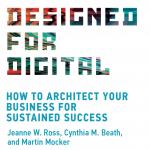In the spring of 2020, impelled by a global pandemic, many established businesses quickly moved workers from office buildings to home offices—often without a hitch. Through that remarkable transformation, many leaders gained a glimpse of the power of digital technologies. But these new distributed workplaces represent only the tip of the iceberg in terms of the changes digital technologies will inspire going forward. For most companies, the digital transformation journey has barely begun.
Already, some companies are identifying new customer value propositions that digital technologies make possible. But as they quickly learn, this requires changes in people’s roles and work processes, not just their locations. Whereas the shift to working from home created a need for collaboration technology, new customer value propositions create demand for extraordinary access to data coupled with new functionality. These changes are more complex than a shift to working from home. Nonetheless, the competitive pressure for speed will be intense.
Here’s the problem: established companies were not designed to operate at this accelerated tempo. Most big companies were built as business and functional silos that rely on hierarchical decision-making processes and messy legacy systems to get work done. These historical remnants impede efforts to rapidly respond to new technologies, data, and customer demands.
A digital transformation, therefore, requires fundamentally redesigning a company (or at least some parts of the company) for speed and agility. The redesign decomposes critical processes and offerings into sets and subsets of distinct outcomes—business components—so that individuals can quickly take action to help the company achieve strategic goals.[foot]Components can range in scope. For example, the people, process, data, and technology that constitute an online search can be a component, as can those that result in the hiring of an employee. Part of the componentization challenge is establishing the boundaries of individual components so that accountability for them is meaningful.[/foot] Quick action depends on assigning accountability for each component to an individual or team. Clear accountability releases the owner from layers of approvals and coordination, thus facilitating intense focus and rapid response.
Implementing a componentized architecture while simultaneously abandoning old ways of doing things is an evolutionary journey. This briefing explores that journey.












